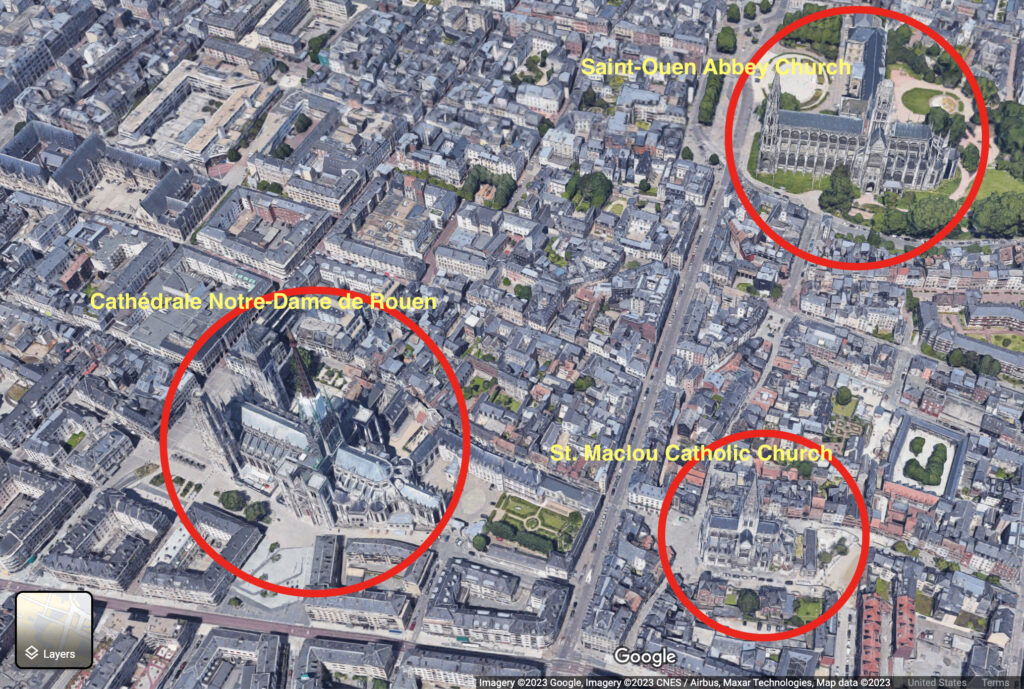
Rouen’s rich history is reflected in its magnificent architecture. A treasure trove of half-timbered, Renaissance, Baroque, Art Nouveau, and Gothic buildings dominate the cityscape. For history and architecture enthusiasts, Rouen does not disappoint. Within a ten-minute walk, you can encounter three outstanding Gothic churches.
The first of these Gothic masterpieces naturally is Cathédrale Notre-Dame de Rouen, which I wrote about in my last post. But equally fascinating are Abbatiale Saint-Ouen (Saint-Ouen Abbey Church) and Église catholique Saint-Maclou (St. Maclou Catholic Church). Saint-Maclou is considered one of France’s best examples of the Flamboyant style. Saint-Ouen, as large as Rouen Cathedral, was also completed in the Flamboyant style in the 15th century. These beautiful examples of Gothic are only blocks away from the Cathedral.
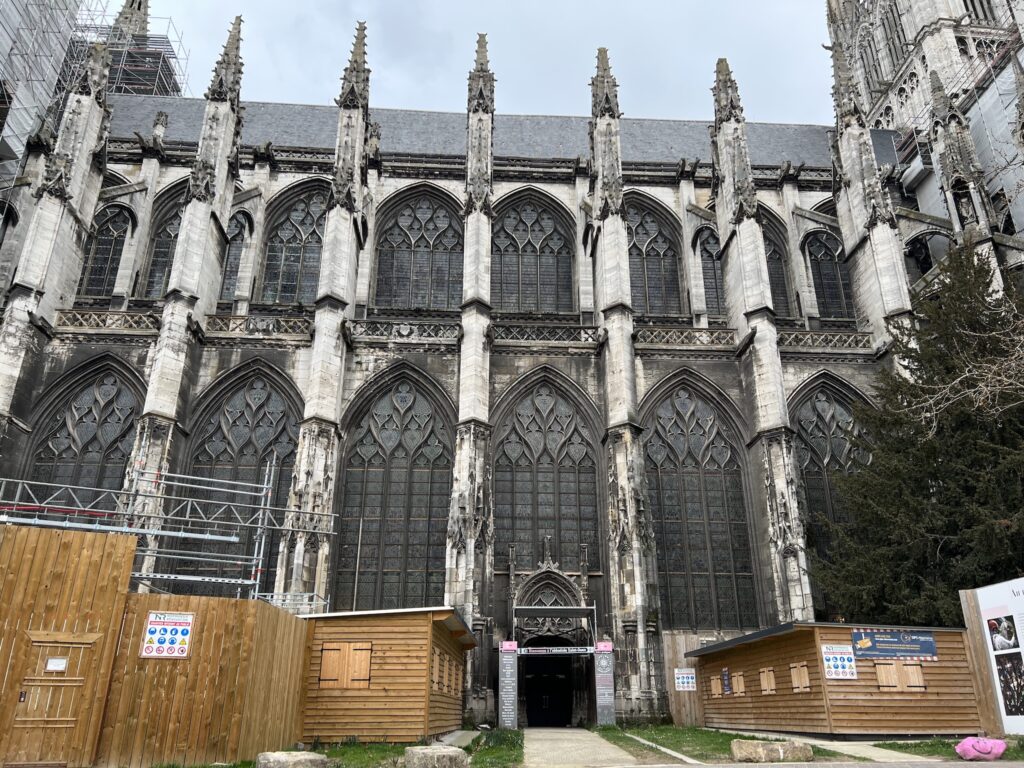
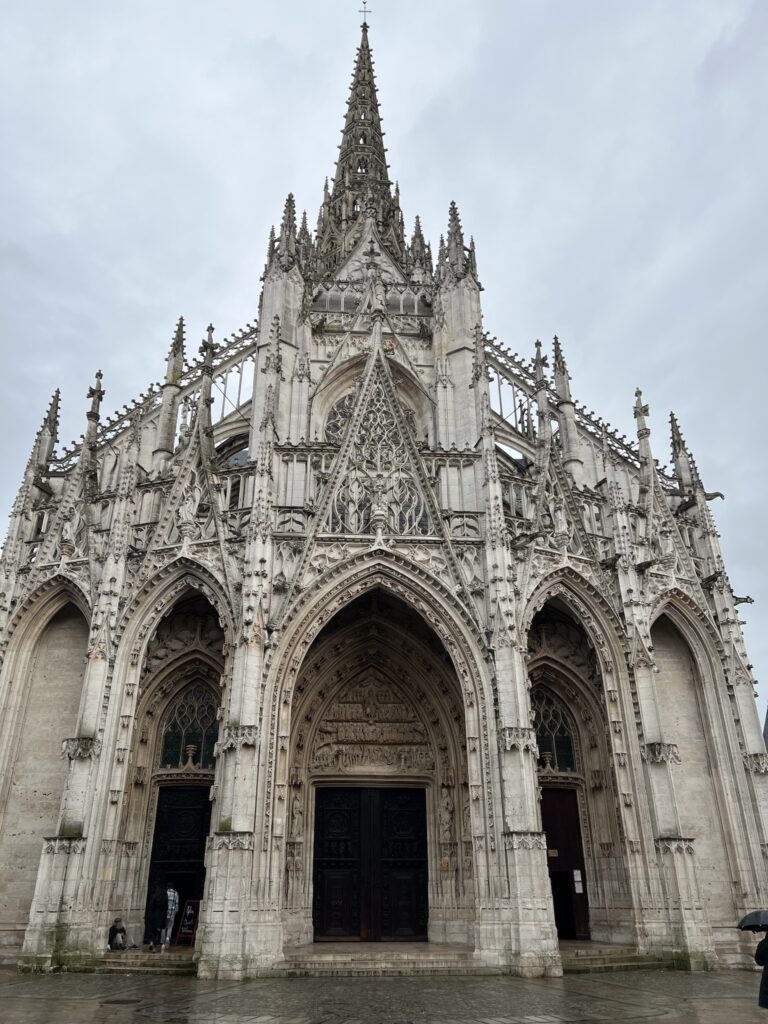
Developed in the Late Middle Ages and Renaissance, the Flamboyant Gothic style is characterized by double curves forming flame-like shapes in the bar tracery, ornamental ribs in the vaults, and tall narrow pointed arches and roofs. In general, it looks like an explosion of frill and lace. Although overwhelmingly beautiful, Lisa and I do not favor the style, and that is one factor that dissuaded us from making Rouen our main destination. Nonetheless, we enjoyed admiring these churches.
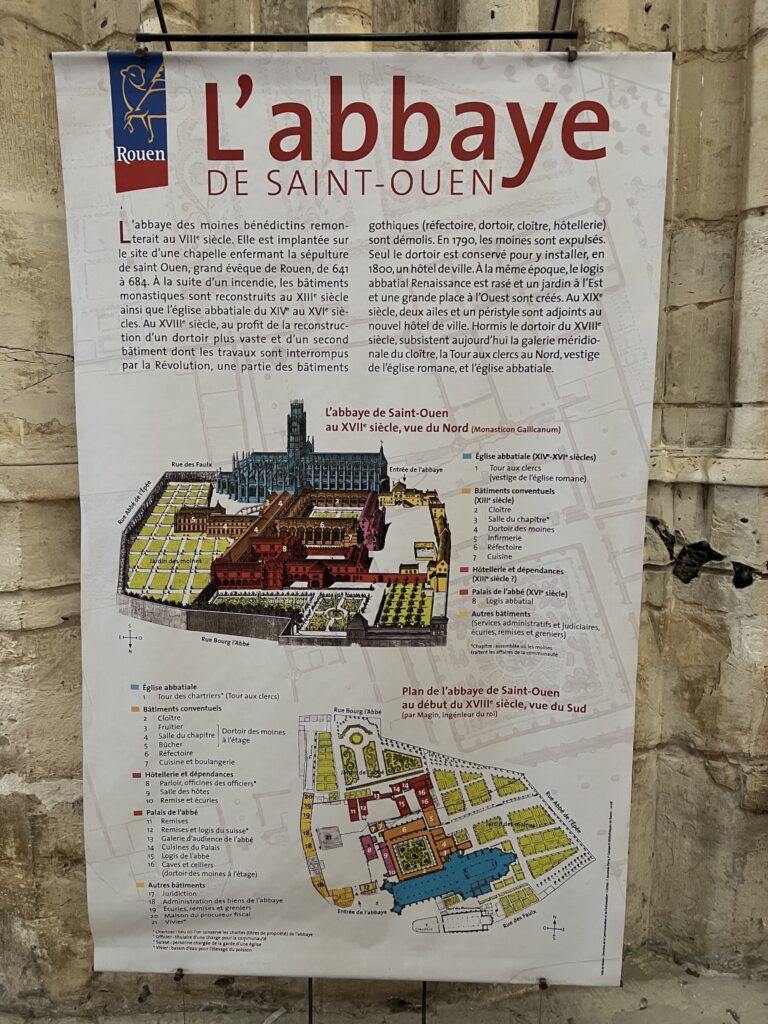
Saint-Ouen Abbey Church was originally part of an extensive Benedictine Abbey complex. Founded in the 6th century, it was one of the most important Benedictine monasteries in medieval Normandy, playing a significant role in religious and secular history. After Joan of Arc’s martyrdom in 1431, her conviction was posthumously investigated on appeal at the request of her family. Eventually, her conviction was overturned, and she was declared innocent. The verdict of her rehabilitation trial was announced at Saint-Ouen Abbey with Joan’s family in attendance.
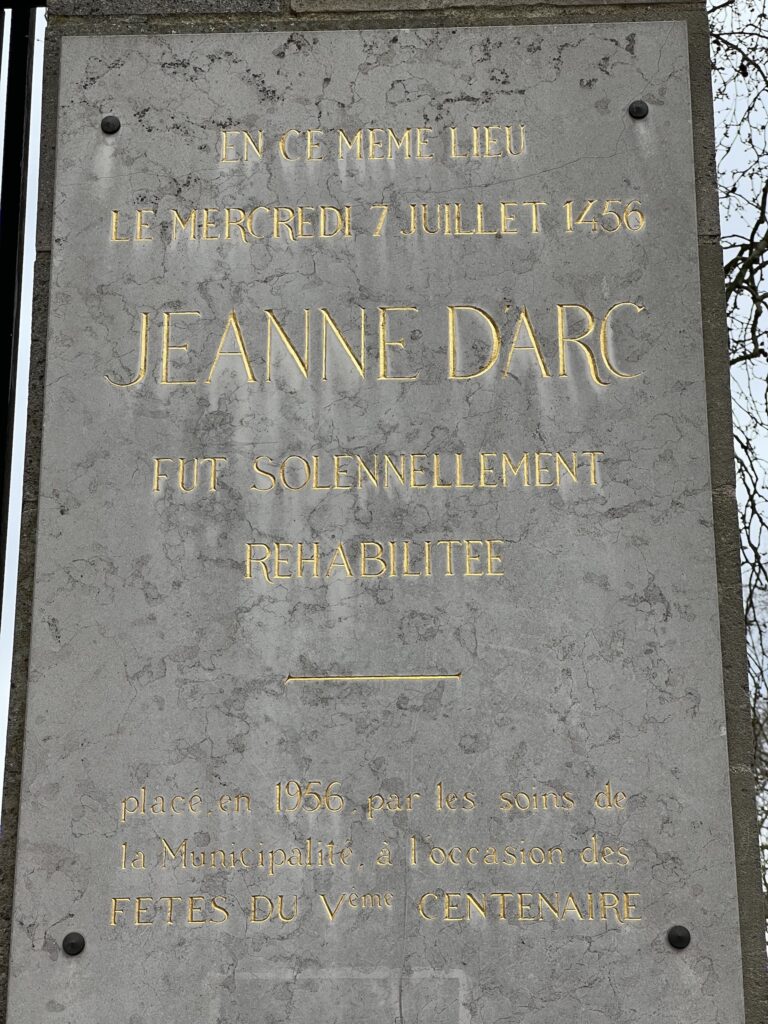
The abbey was closed during the French Revolution, and the monks’ lodging and old abbey garden are now part of the City Hall of Rouen. Since the church has ceased regular religious services, there were no rows of chairs in the nave, which impressed on us the grand scale of the pillars and vaults. I understand the space is used for special events now, but it still had a transcendent effect on us.
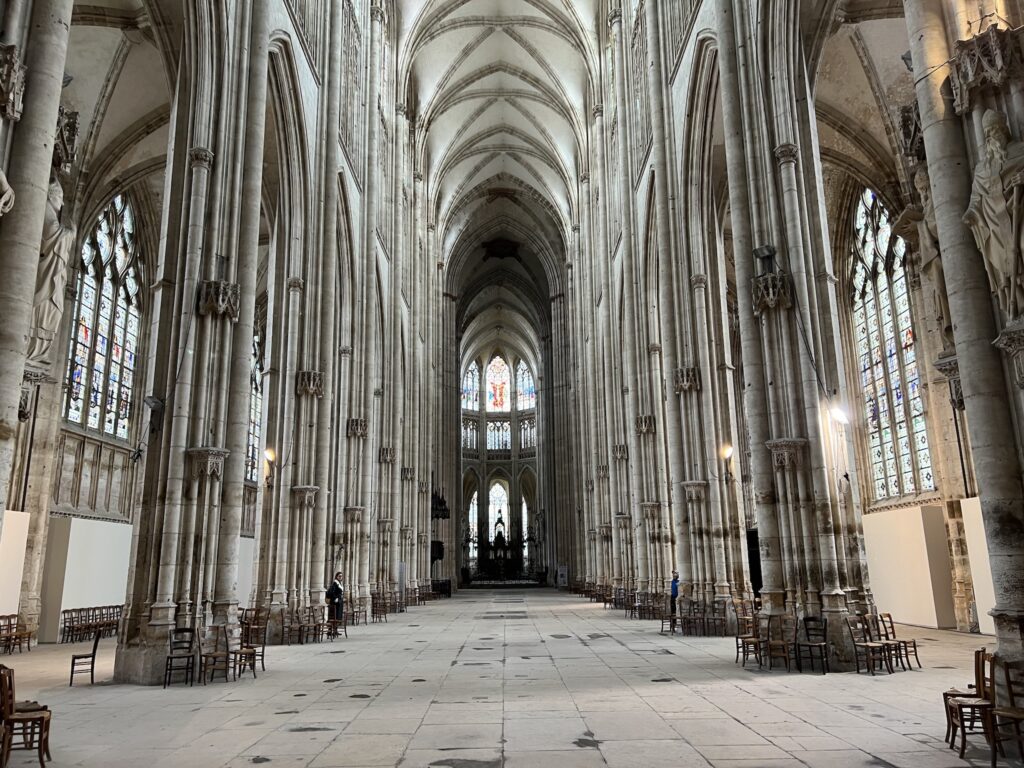
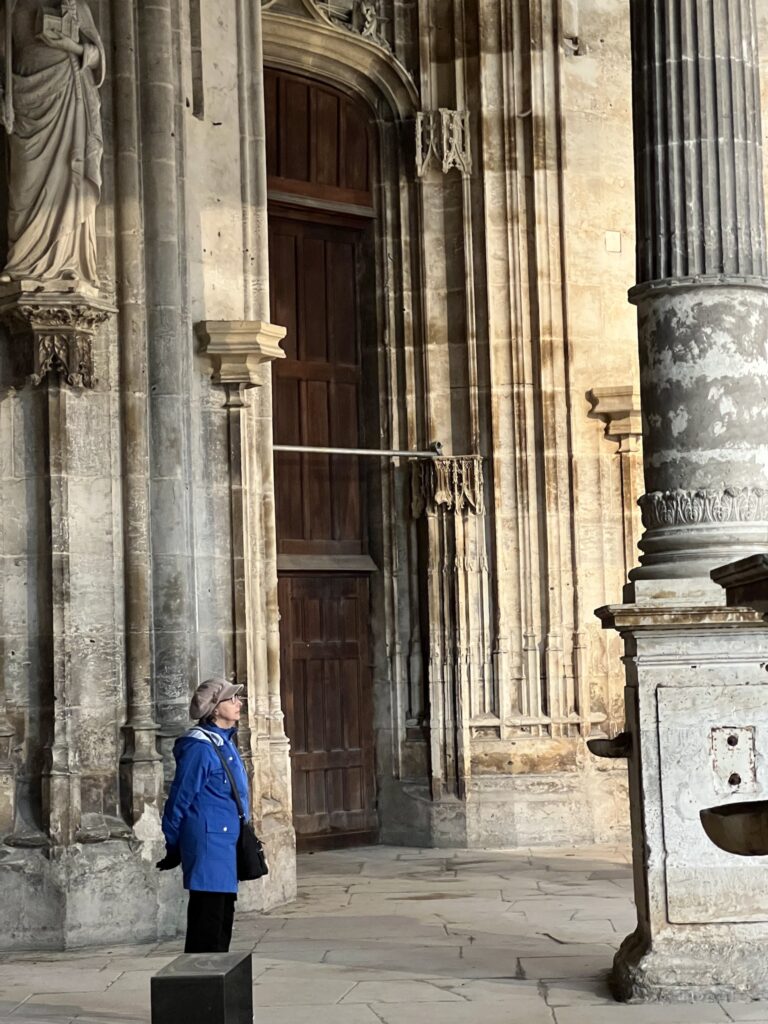
Built during the transition from the Romanesque to the Gothic period, the smaller but no less beautiful Church of Saint-Maclou is considered a Gothic masterpiece. Its unique pentagonal form, five gabled porches arranged in a semi-circle, and beautifully carved Renaissance doors compel you to agree with its designation as a historical treasure.
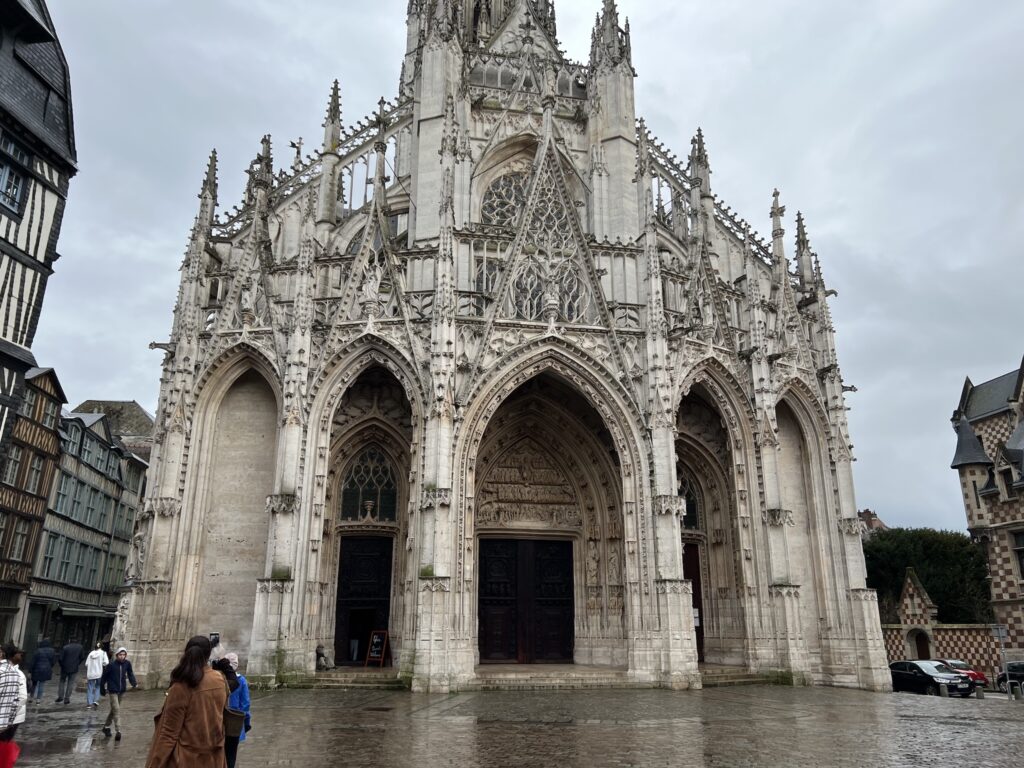
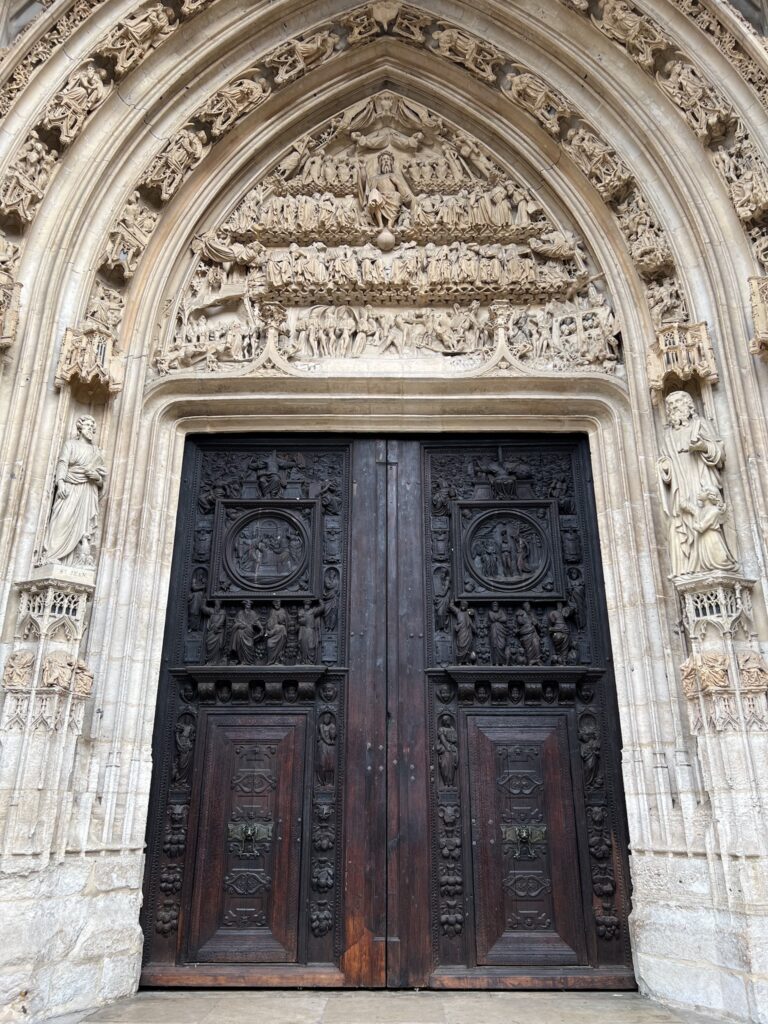
Situated in a neighborhood of half-timbered buildings, it feels old but accessible, like a local parish church. We saw people reverently praying inside, making exploring the building a spiritual experience. The central crucifix lit up by light from the lantern tower inspires the church’s intended use as a place of worship. We were indeed blessed to partake in the uplifting atmosphere.
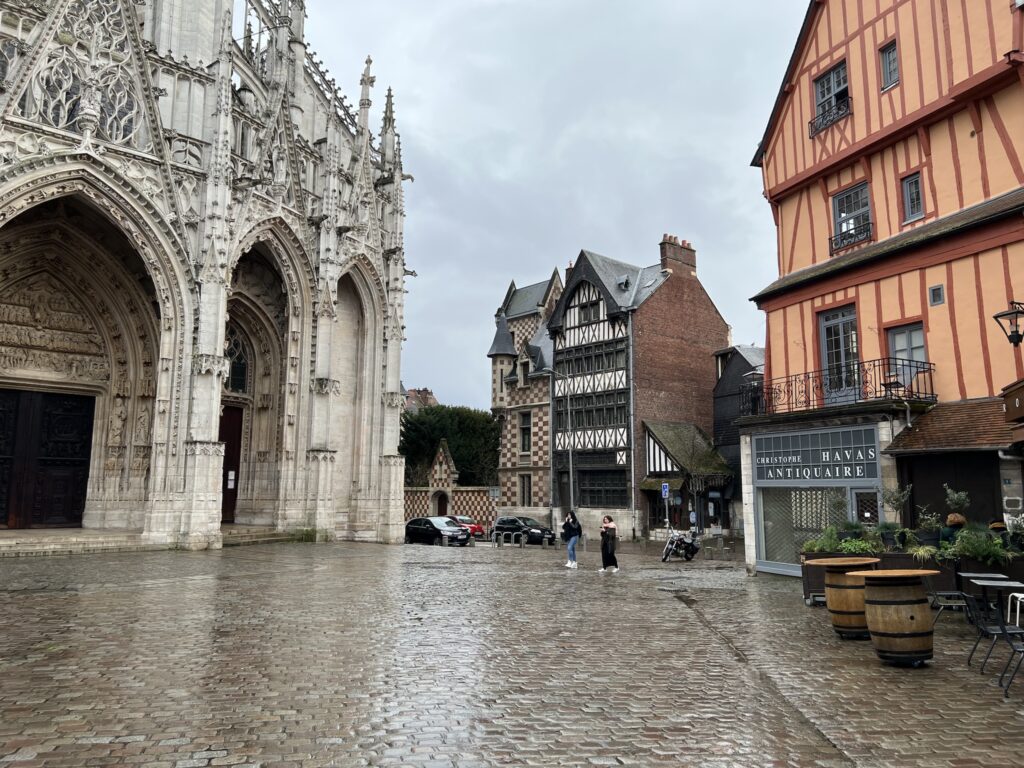
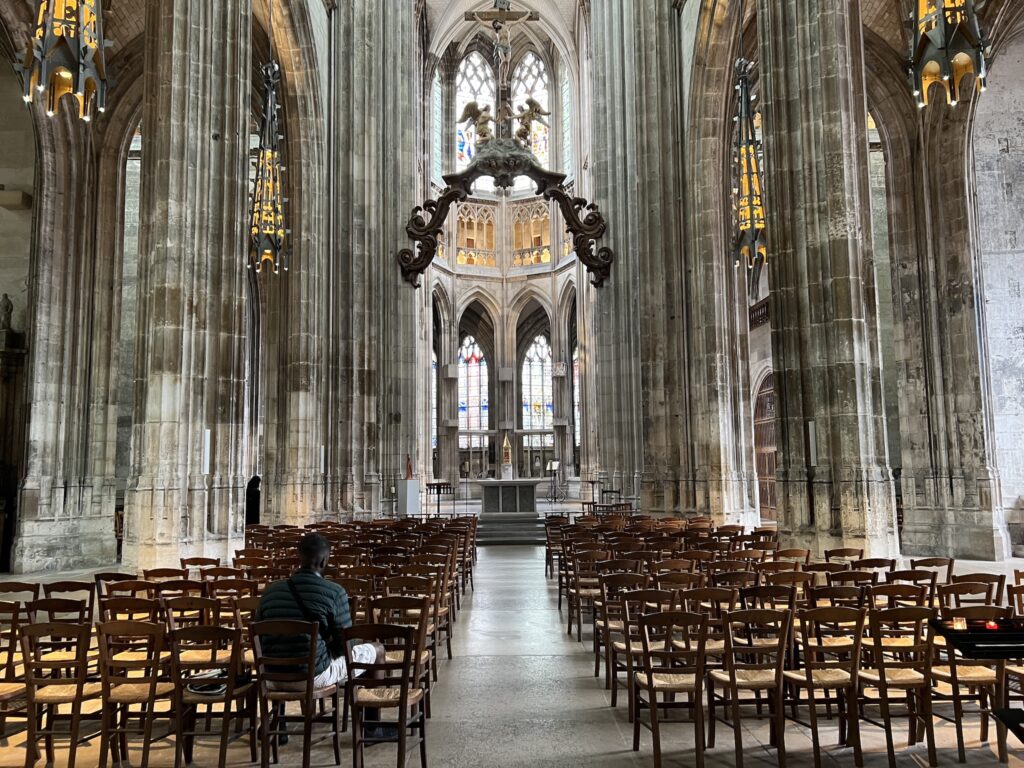
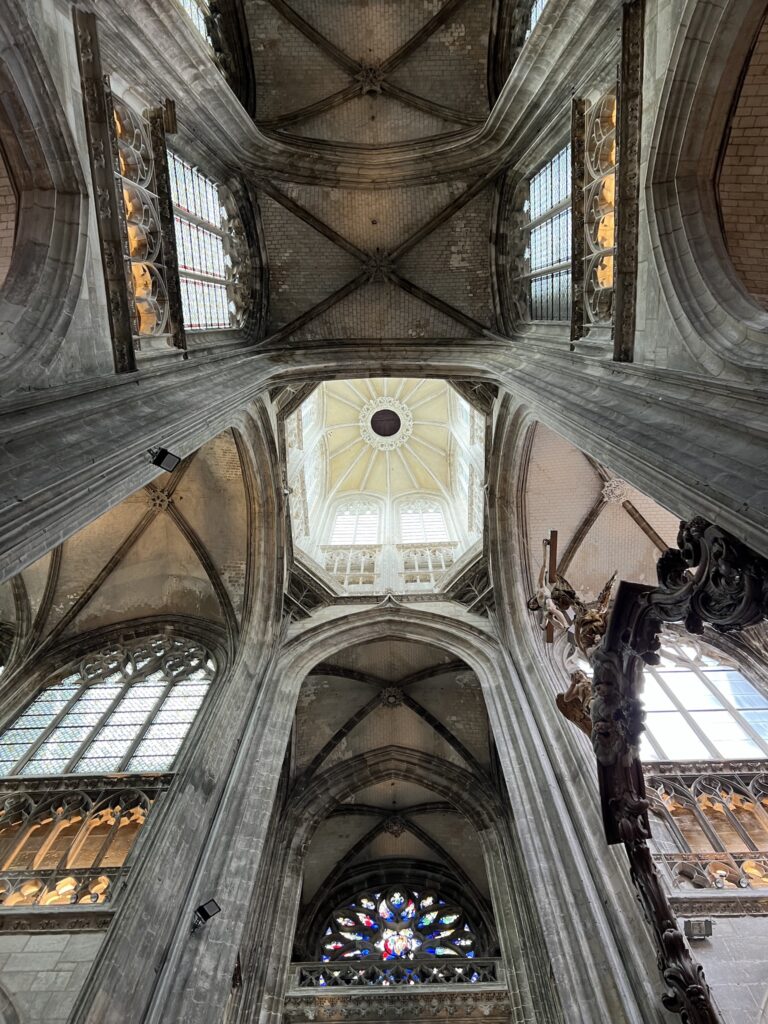
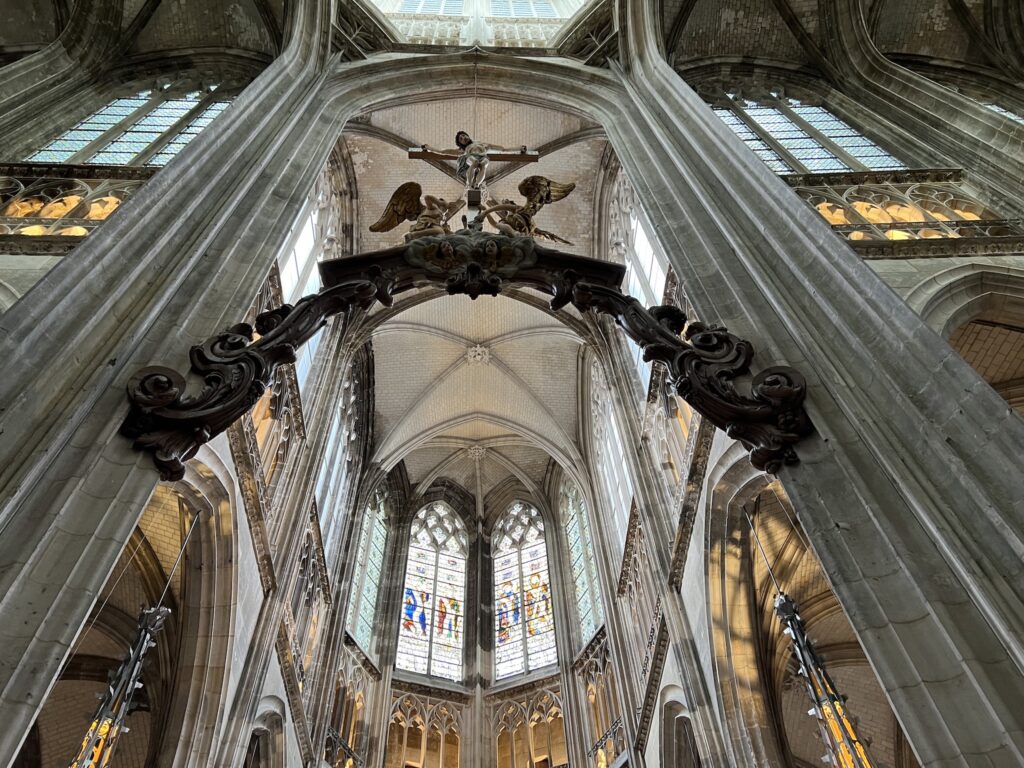
Rouen rewards its visitors with remarkable historical sites and architectural beauty, but with its trifecta of Gothic churches, its appeal to pilgrims like ourselves is simply unmatched.
Index of blog posts for our Cathedral Pilgrimage
- 1. A Cathedral Pilgrimage
- 2. Preparing for a Pilgrimage
- 3. First Stop – Reims
- 4. Reims – City of Kings
- 5. Saint Remi and His Basilica
- 6. Christian Time Traveling
- 7. Second Stop – Laon
- 8. Cathédrale Notre-Dame de Laon
- 9. Third Stop – Amiens
- 10. Amiens Cathedral: Almost Heaven
- 11. Soaring Vaults and Great Treasures
- 12. Enchanted Chanting
- 13. Amiens: A City of History, Art, and Culture
- 14. Fourth Stop – Beauvais
- 15. Fifth Stop – Rouen
- 16. Cathédrale Notre-Dame de Rouen
- 17. 3:10 to Gothic
- 18. Joan’s Triumph
- 19. Rouen Treasures
- 20. Cathédrale Notre-Dame de Chartres
- 21. Chartres Cathedral: A Pilgrimage Through Time and Light
- 22. Chartres’s Facade: Functional Beauty